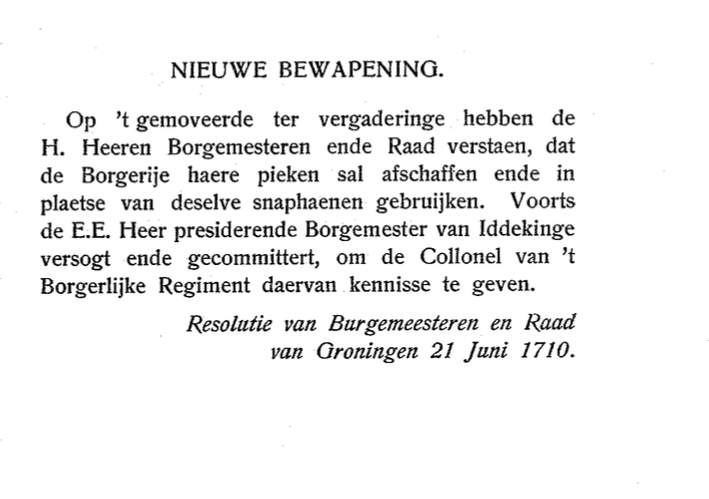woensdag 16 december 2015
Nassau Ouwerkerk
As some of you may know, the Dutch Army Museum has moved from Delft to a new big location at Soesterberg, and is now called the National Military Museum.
A lot of the old collection can be found on-line now, like this drawing by Dutch Military artist Hoynck van Papendrecht, showing Dutch horse guards of the Nassau-Overkerk regiment. Unfortunately it is very difficult to evaluate this picture as we know little of his research, but it's nice anyway.
Labels:
Hoynck van Papendrecht,
Nassau-Overkerk,
uniformen
donderdag 22 oktober 2015
Skelet uit 1672 ~ Remains of 1672?
Skelet opgegraven soldaat eenmalig te zien in Nijmegen
http://nu.nl/wetenschap/4150222/skelet-opgegraven-soldaat-eenmalig-zien-in-nijmegen.html
~
In Nijmegen, the remains of probably a French soldier who died in the siege of the Knotsenburg citadel are shown to the public in one of the archeological depots.
zondag 18 oktober 2015
NIeuw maandblad ~ new magazine
Van Bruno Mugnai kregen wij bericht dat zijn nieuwe tijdschrift over militaria en uniformen uit is en dat het eerste deel gratis is te downloaden! Deze aflevering heeft een artikel over het Venetië aan het einde van de 17e eeuw.
Link: http://www.historyanduniforms.com/
~
New magazine on military history by the esteemed mr Bruno Mugnai from Italy. First one is free to download!
donderdag 17 september 2015
Plug bayonet
Een interessante vondst in Tiel van een Franse bayonet uit 1672
Meer over deze vondst hier
~
In Tiel, a town south-east of Utrechtm a French plug bayonet has been found, dating from probably 1672. In the dutch section a link to the dutch article and an interview with the archeologist.
woensdag 12 augustus 2015
vrijdag 24 juli 2015
Artilleriemuseum 'T Harde
Not all military museums have moved to Soesterberg: on the artillery range at 't Harde, there are at least three musea. We visited the Royal Dutch Artillery museum, a classical museum with lots of stuff and accompaning text boards, beautifully laid out and a very nice connection indeed from the middle ages up to a nuclear warhead.
The Dutch Artillery Regiment was founded in 1677 by Stadholder William III. I have posted below the paperwork involved regarding the States General, and also some 1670's type uniform pictures.
zondag 19 juli 2015
woensdag 13 mei 2015
Het Deense Leger ~ Danish Army History
Bij het sneupen een boek gevonden over het Deense Leger, door Th. Thaulow.
~
Whilst browsing the local bookstores I found a nice book in Danish on the Danish Army, "Den Danske Soldat", by Th Thaulow, 1946, with some nice period pictures in it of which I show two. The book takes a very broad view on the Danish Army, from the Middle Ages up to the Second World War.
donderdag 9 april 2015
Nieuwe Vaandels voor de schutterij
In kleur, de vaandels van de schutterij in de Stad Groningen, mid 18e eeuw.
~
In colour this time, the flags of the Groninger City Militia, mid 18th century. From the Groninger Volksalmanak.
donderdag 26 maart 2015
Pieken en musketten ~ Of pikes and muskets
The above text I took from the 1910 edition of the "Groninger Almanak" , a 19th century yearbook-series about "interesting things happening in the Province of Groningen", mostly historic facts about people, streetnames and the like.
This text states that the pikes, used by the city militia is to replaced by flintlocks. THis is about the same period that in the States' army the pike was to be replaced.
dinsdag 3 maart 2015
Maastricht II
Some more pics. The guns are Navy Guns, so are not original, and date IIRC from the Napoleonic period. The fortress is not for the claustrophobic...
Maastricht Fortress of St Peter
This years expedition was to the Limburg Capital of Maastricht were we visited the St Peter Fortress. In 1672 the St Peter Hill was used by the French to bombard the city and near the city using the hill's cave system (the rock is used as a building material), so the Estates General ordered a new fortress to be build to protect the city, which went rather well. In 1701 the fortress with a great view on the surrounding landscape and the river Meuse was finished.
It is also possible to visit the cave system itself but it is not possible anymore to go from the caves to the fortress, as some of the corridors have collapsed.
Maastricht has a lot to offer, some of the old city walls are standing there as well, as the first picture shows.
Abonneren op:
Reacties (Atom)




























